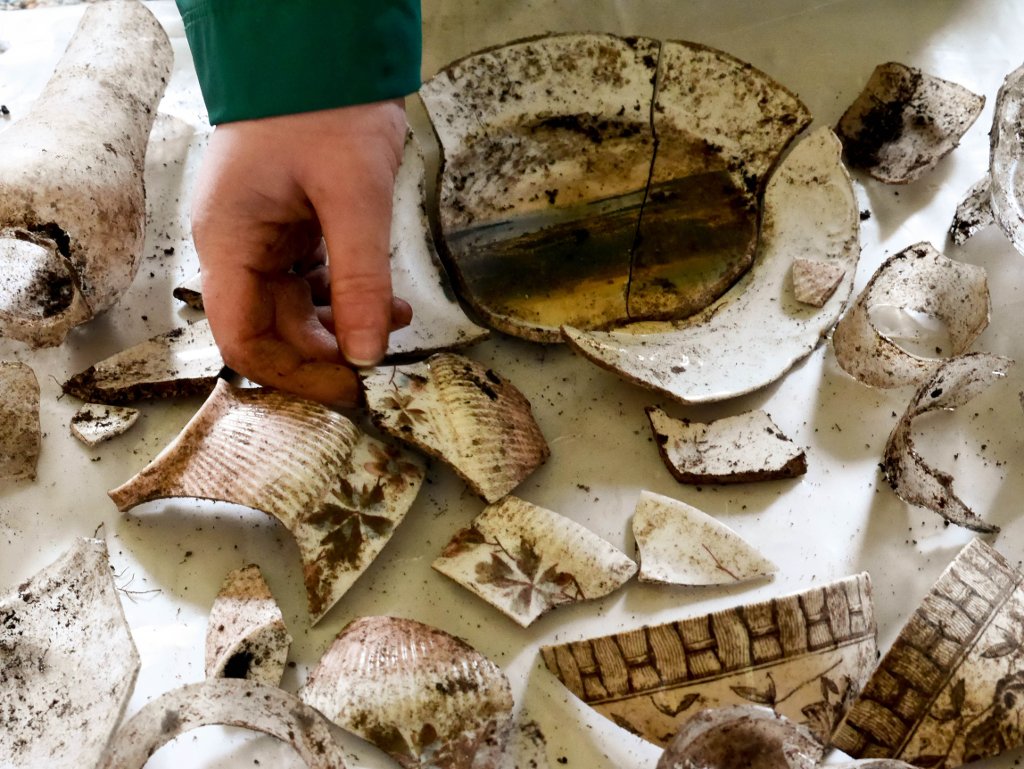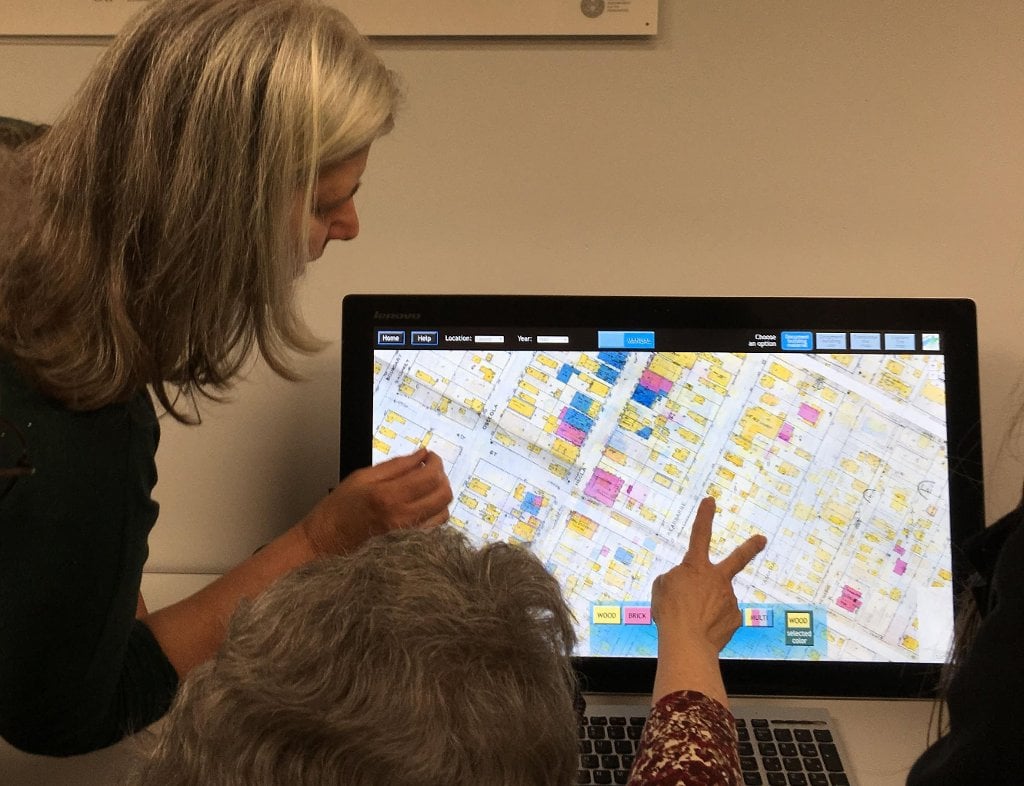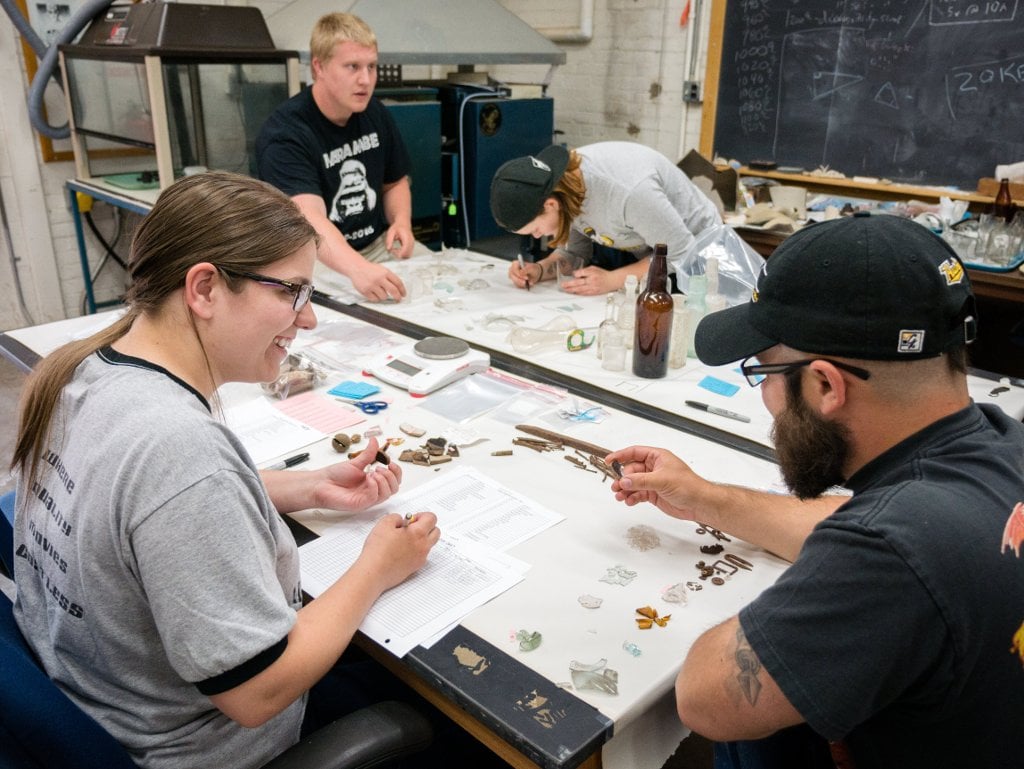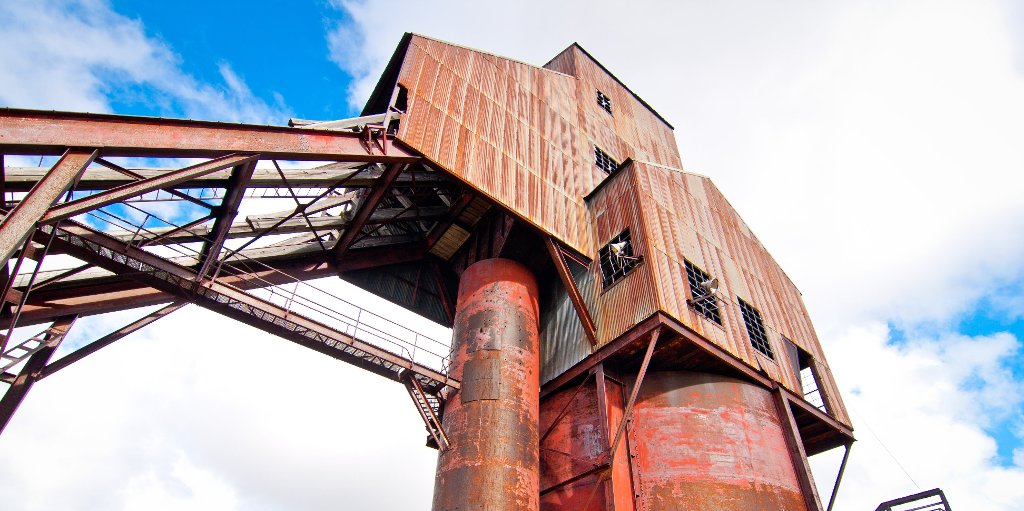The Industrial Heritage and Archaeology program celebrates its 25th anniversary with a joint celebration with Keweenaw National Historical Park.
There are museums and entire academic fields dedicated to the study of the human past. Whether the alabaster stone of Roman ruins or the moveable type of the printing press, humans as a species have memorialized many aspects of our history.
But what about our recent history? What of the history of the paper mill, the logging camp, the range light? The study of human use of technology and creation of industry is a specialized field, and there are only a handful of programs devoted to its study and preservation. Michigan Technological University is known for having one of the premier industrial heritage and archaeology programs, and this year the program celebrates its 25th anniversary.
Begun in 1991 as a master’s degree program, the field of study broadened to include a doctoral program in 2005. Housed in Michigan Tech’s Social Sciences department, the Industrial Heritage and Archaeology program (IHA) has an interdisciplinary focus on archaeology, historic preservation, anthropology and the history of technology.
“There is no undergraduate program that leads to this program,” says Pat Martin, professor emeritus and one of the founders of the IHA program at Tech. “They come from all different angles. It’s about bringing passion and imagination together on a topic.”
Piecing Together the Past
When an industrial archaeologist begins to work at a site, he or she does so with the knowledge that the records are incomplete.
“Our work is understanding broader structures of capitalist society, to make sense of all the threads that are there,” says Bruce Seely, one of the IHA program’s founders and dean of the College of Sciences and Arts. “As in all historical projects, you never have the whole record. You are always missing pieces of information. You have records, images and the artifacts themselves. Rarely will they speak on their own, though they all have stories to tell.”
In the video below, take a tour of the Archaeology Lab at Michigan Tech.
One of the largest sites faculty in the program have tackled is the West Point Foundry in Cold Spring, New York. Workers at the antebellum manufacturing site produced locomotives, cannons and steam engines. Michigan Tech partnered with the Scenic Hudson Land Trust to conduct a number of field schools at the site. That’s another key component of the IHA program: Students and outside partners are integral to the research process.
Current projects include examining faunal remains—bits of animal bones, hair and hides—at the Coalwood logging camp near Munising to learn about the diets of loggers, cataloguing 40 years of archaeological records from the Hiawatha National Forest, excavating near the Copper Harbor Range Light keeper’s house for Fort Wilkins, excavating farm dwellings in the Finger Lakes region of New York, working with the National Park Service at the Pullman National Monument to understand the complex social fabric of the area, and others.
And while history rarely recorded the memories of the workers who toiled at these places, the IHA program researchers and students seek to resurrect their stories. The study of heritage has shifted toward telling the histories of people besides the leaders of the day.
"That’s the nice thing with artifacts—if (people) didn’t leave written records, they left an archaeological record. When you combine with historical record, you have interesting chances to make more complete interpretation of the past."
One of the key places those interpretations are published is IA, the journal of the Society of Industrial Archaeology. The journal is housed at Michigan Tech.
Holistic Approach
Martin argues that two key assets of the program are its size and its enduring commitment to interdisciplinary research.
“The quality of the work is what attracts attention,” he says. “There’s nothing wrong with being small and nimble. At Tech, it’s a place you can get to know people. (My colleagues) are also my neighbors; we have lunch together, our students interact. Because it’s an interdisciplinary department already, we aren’t bound by artificial boundaries that disciplines tend to build up around themselves.”
Studying and researching in the field of industrial heritage and archaeology is far more involved than visiting musty library stacks or mucking about at a dig site. The field utilizes ground-penetrating radar, infrared imaging/sensing, GPS and other technologies. Researchers and students also study landscape and environmental change, as well as the social transformations ushered in by the industrial age.
Each of these lines of study emphasize the relevance of past decisions on contemporary life.
"Choices from the past impact how we make decisions now and how we will in the future."
“We are equipping students today to think critically about the way that humans interact with the environment, both natural and built, and how science and engineering research and decisions in our globalized society impact us in the past, present and in the future,” says Sarah Scarlett, assistant professor of history.
This holistic approach to educating students is an essential principle of the program.
“We’re teaching seeing the world in the more complex way,” says LouAnn Wurst, professor of archaeology. “It provides a framework of looking at the world no matter what job you end up getting. We’re doing more than just training future archaeologists. We’re training people to know and critique and understand the world.”
Twin Celebrations
As the Industrial Heritage and Archaeology program turns 25, so too does the Keweenaw National Historical Park, a frequent partner of the social sciences department.
Local partnership projects include GRACE (GIS Resources and Applications for Career Education), which empowers teachers to bring GIS (geographic information system) into high school classrooms around the state, and to provide summer internship opportunities to students to learn spatial programs and implement what they learn in partnership with local policy makers. The Keweenaw Time Traveler, another partnership project, is creating a digital history of the Copper Country.
“The student research products of the GRACE project continue to provide fresh perspectives on the park and the community—as well as GIS solutions that can be used throughout the national park system,” says Wendy Davis, superintendent of the Keweenaw National Historical Park. “The Keweenaw Time Traveler is a great way to connect students with community and to build viable GIS skills.”
Together the IHA program and the historical park have an anniversary celebration planned in the Copper Country September 21-23.
“This event celebrates the past and also looks to the future,” Scarlett says. “The program has been built on great partnerships with the National Park Service and state history associations. The new faculty are keeping up with that tradition and building new relationships. There is lots of community-engaged scholarship going on.”
Michigan Technological University is an R1 public research university founded in 1885 in Houghton, and is home to nearly 7,500 students from more than 60 countries around the world. Consistently ranked among the best universities in the country for return on investment, Michigan's flagship technological university offers more than 185 undergraduate and graduate degree programs in science and technology, engineering, computing, forestry, business, health professions, humanities, mathematics, social sciences, and the arts. The rural campus is situated just miles from Lake Superior in Michigan's Upper Peninsula, offering year-round opportunities for outdoor adventure.






Comments